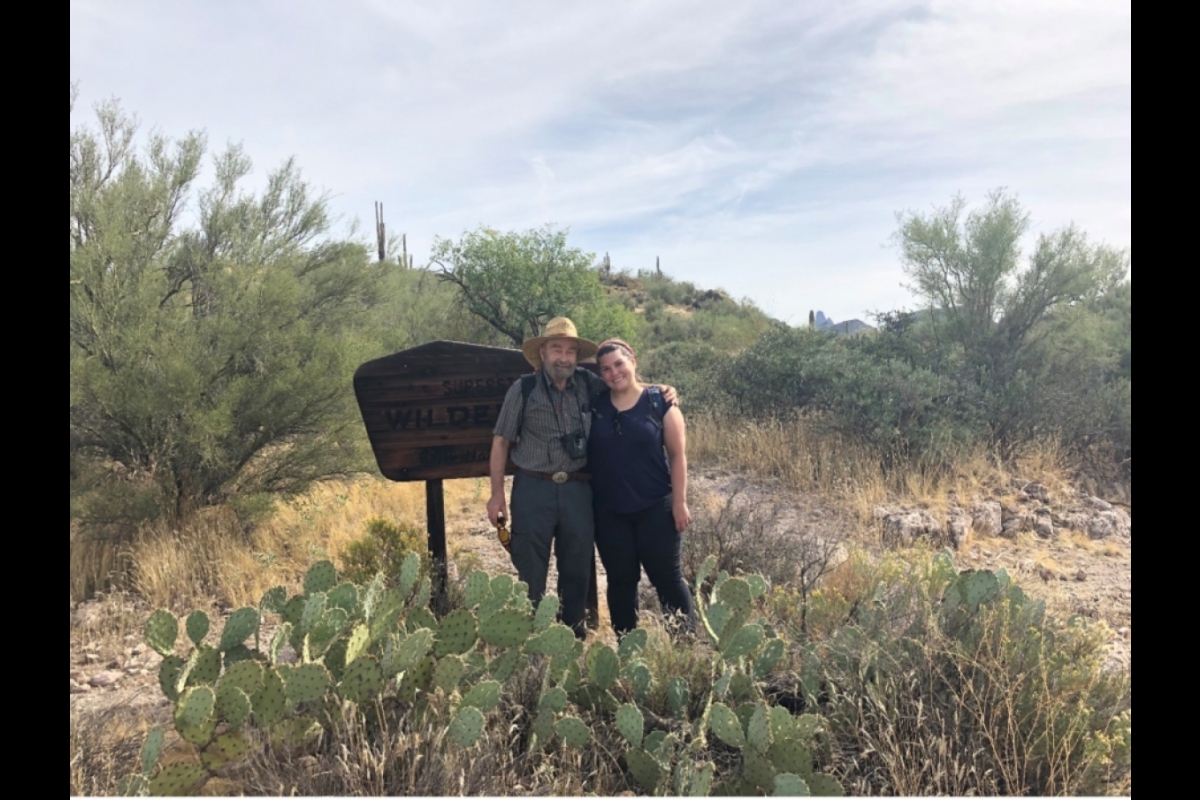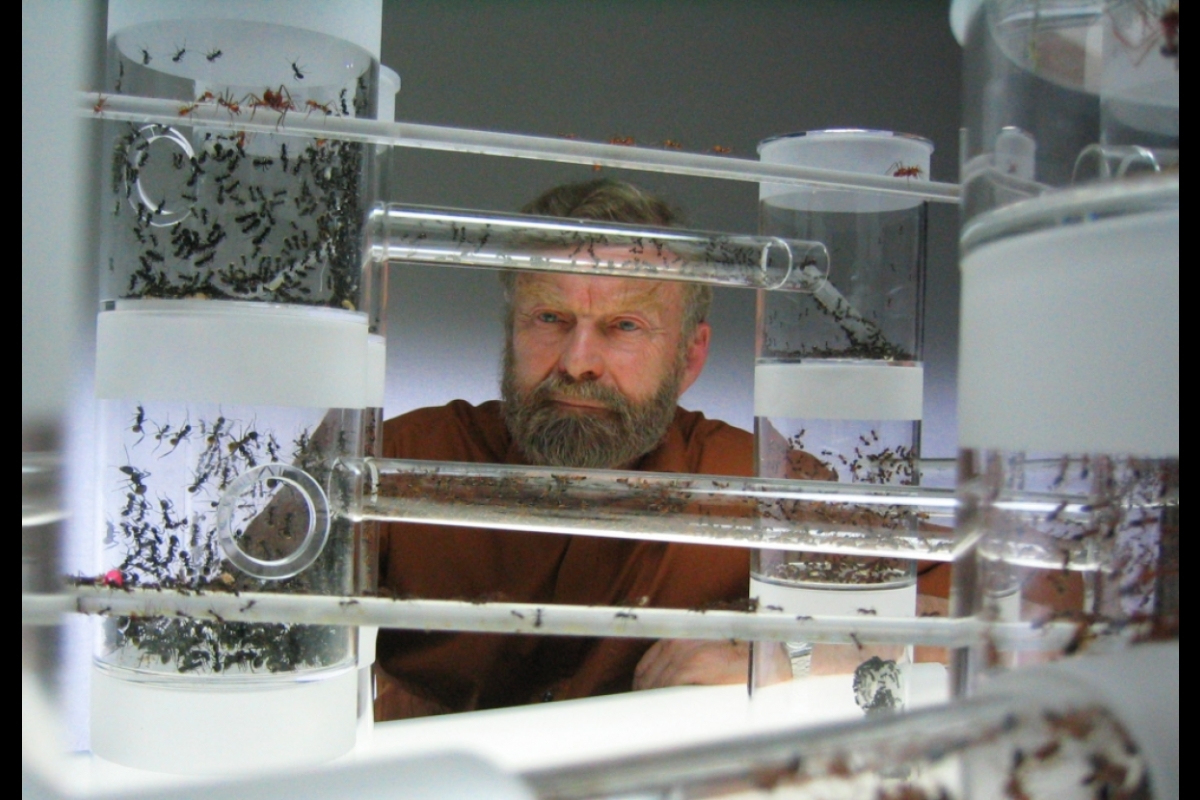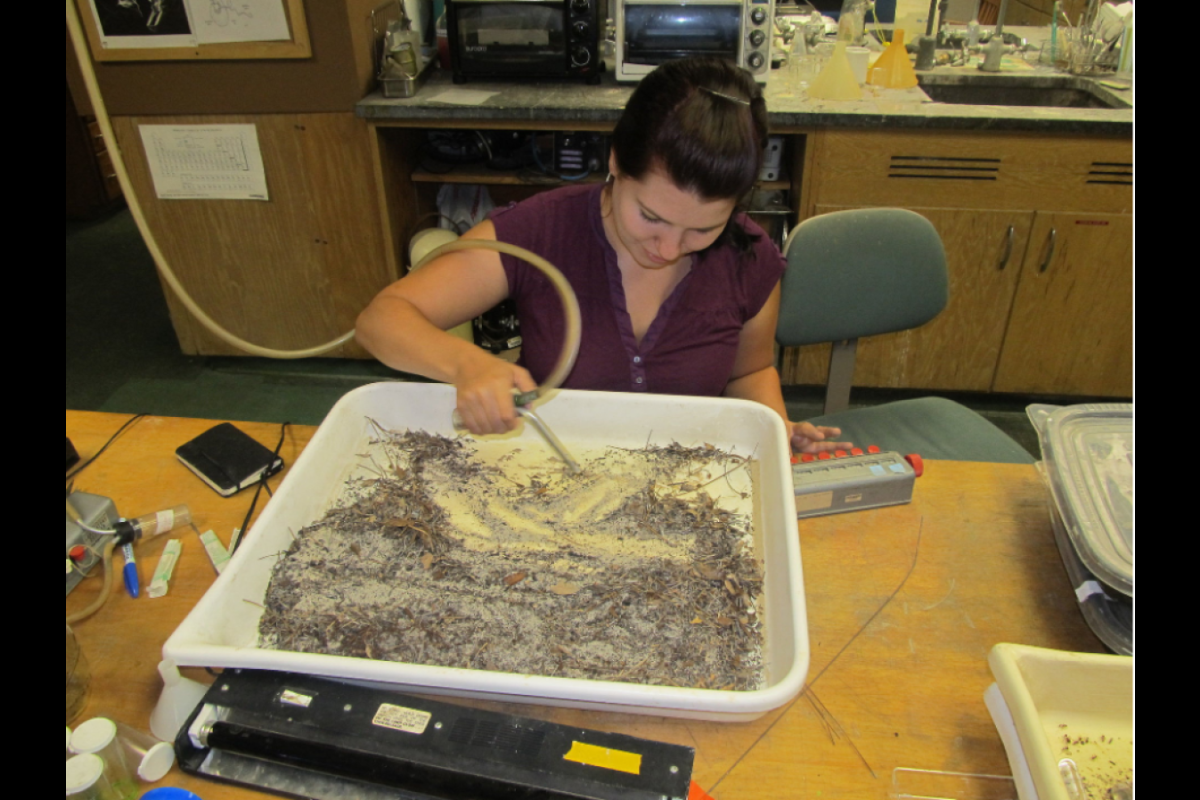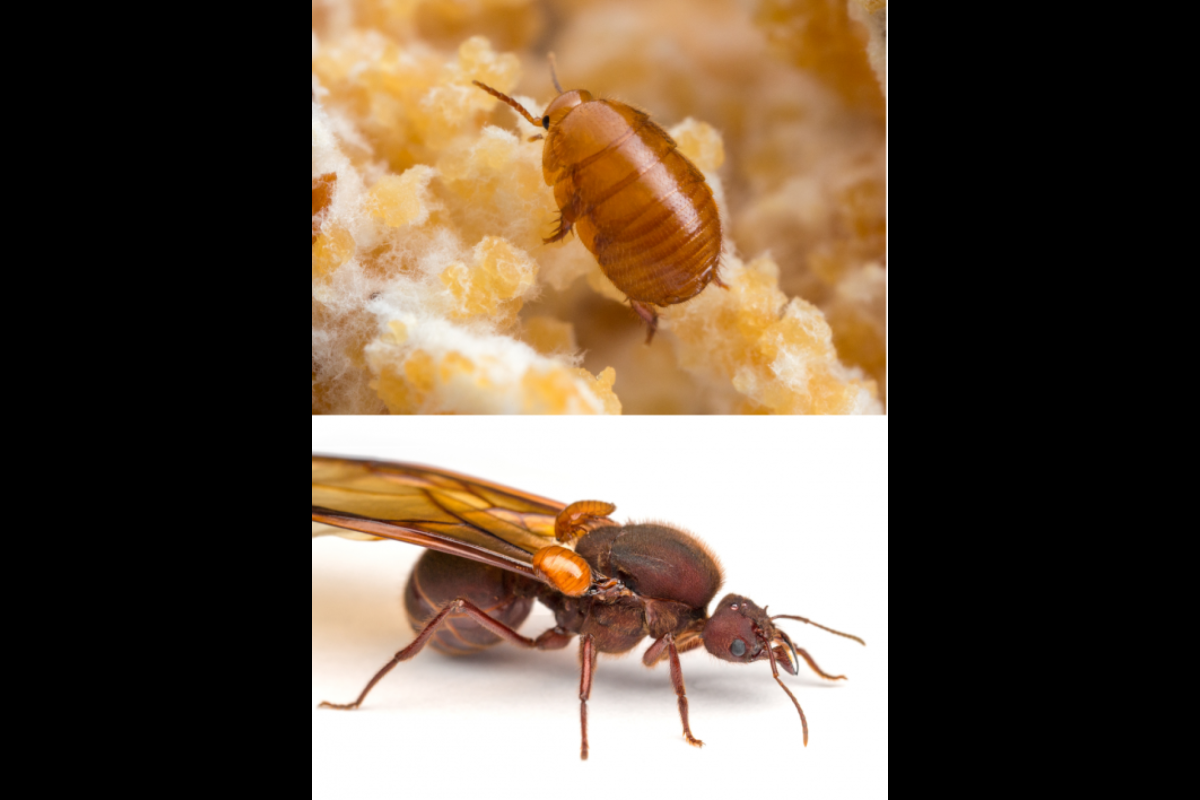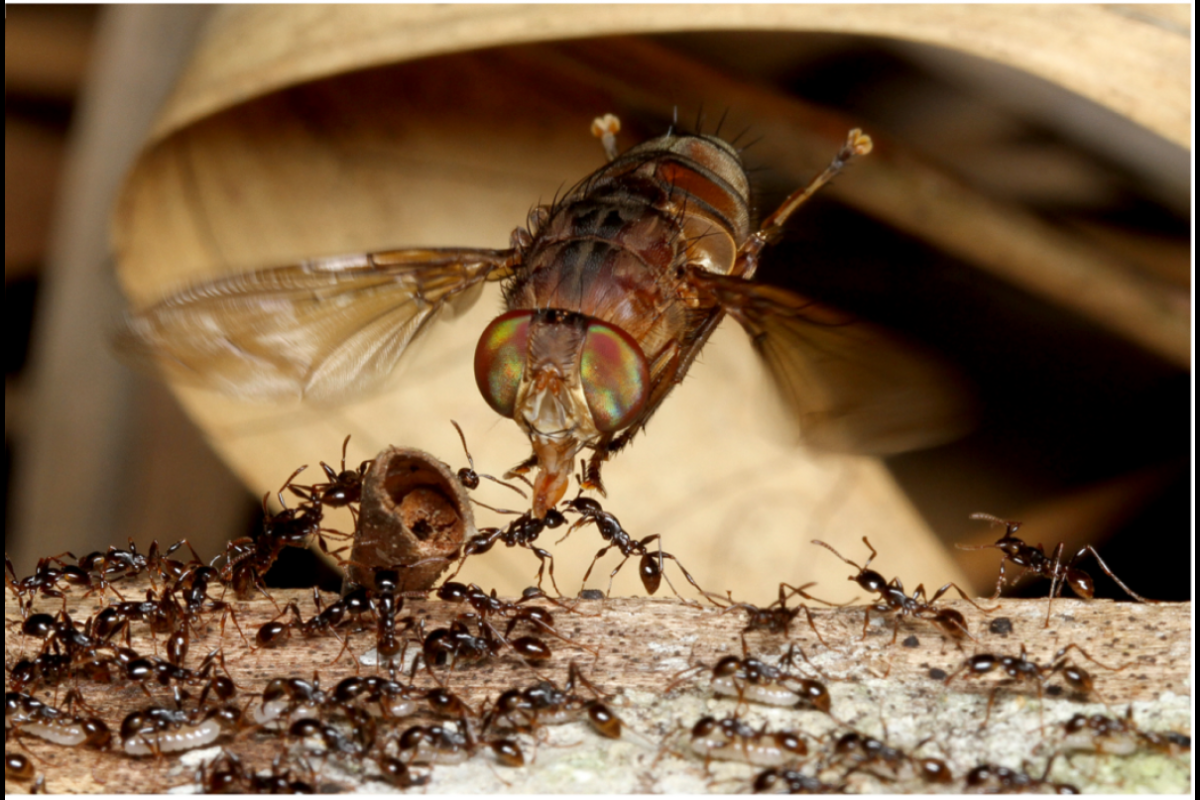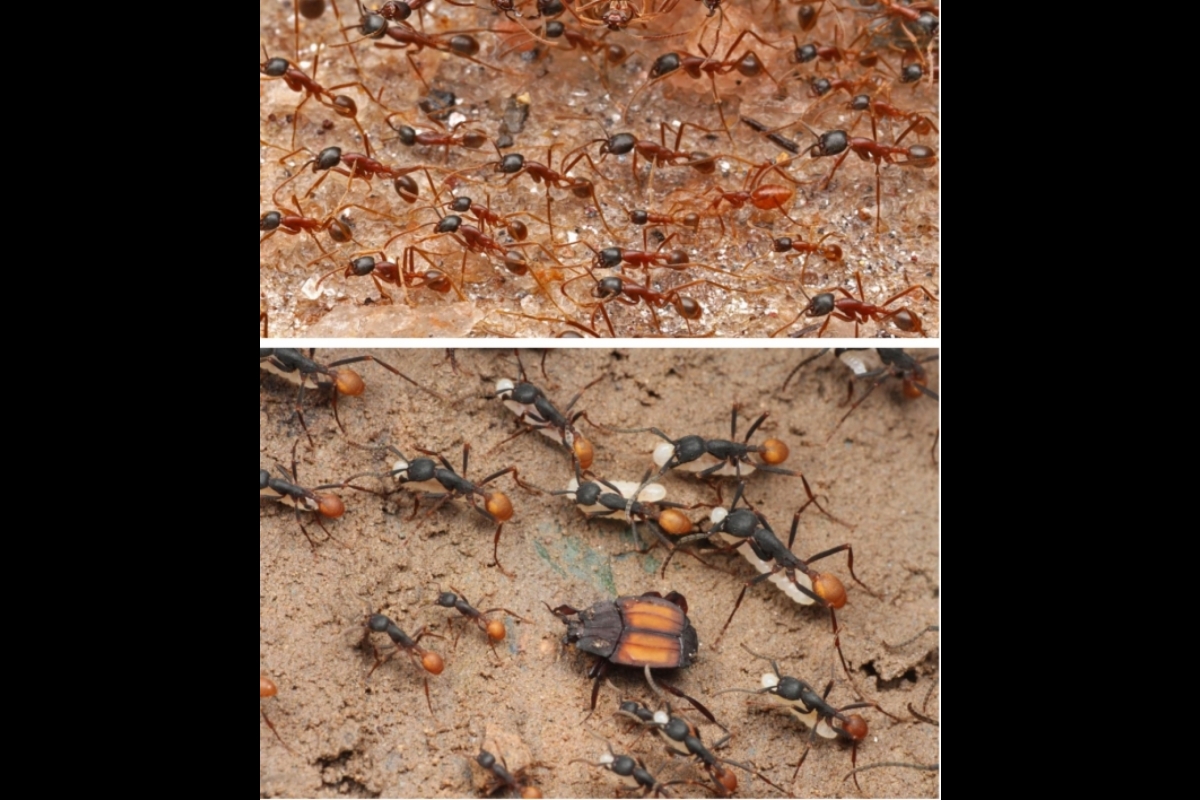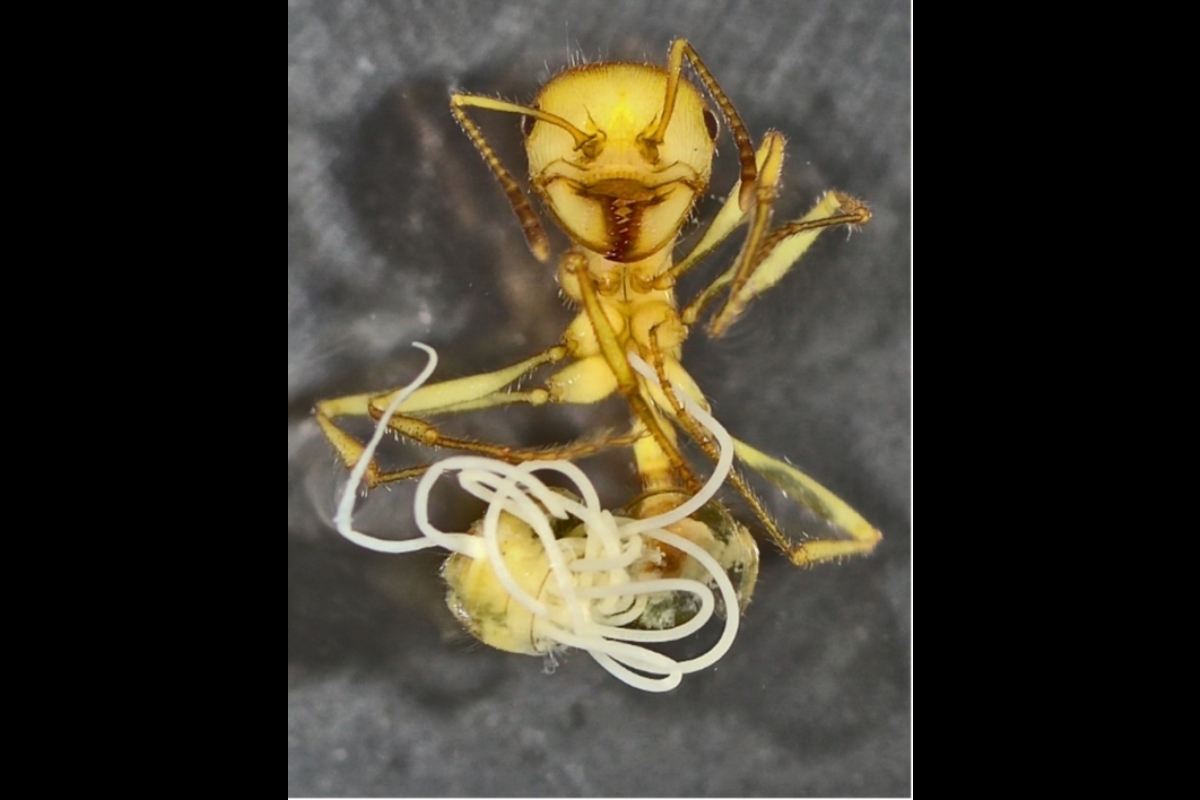ASU Regents Professor's book named finalist for 2023 PROSE Awards
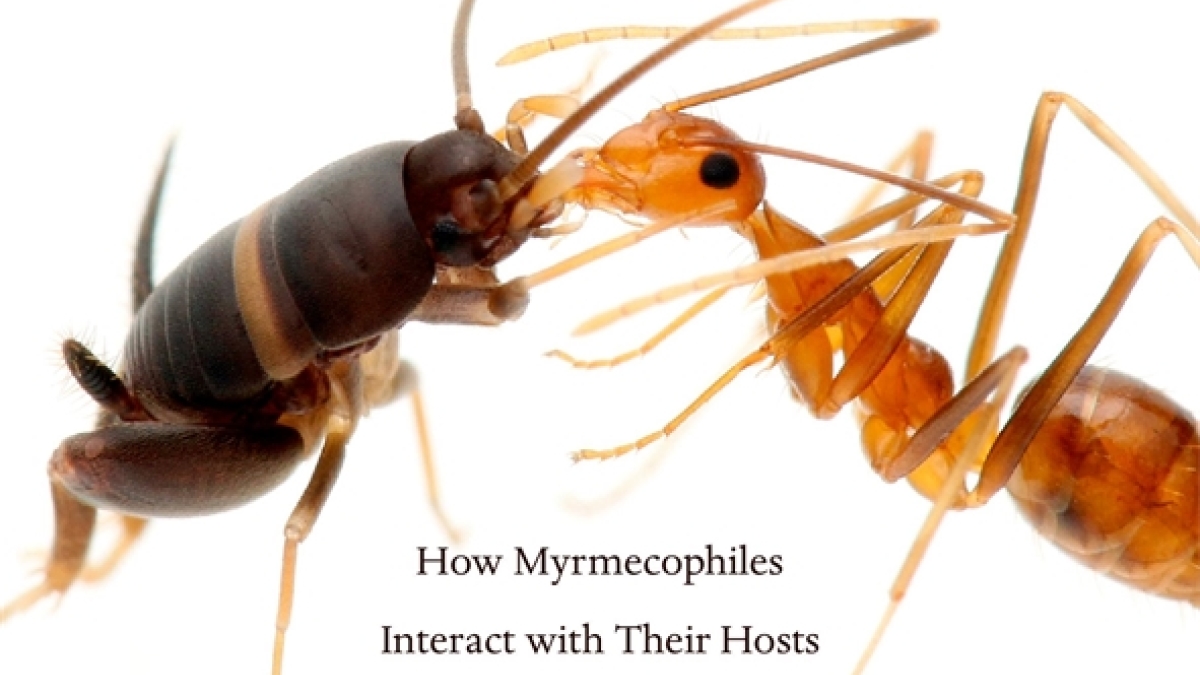
"The Guests of Ants: How Myrmecophiles Interact With Their Hosts" was published by Harvard University Press in July 2022. Image courtesy Harvard University Press
Arizona State University Regents Professor in the School of Life Sciences and Pulitzer Prize-winning author Bert Hoelldobler is once again receiving recognition for his writing by the scholarly community, this time for his book "The Guests of Ants: How Myrmecophiles Interact With Their Hosts."
Co-authored by Christina Kwapich, a former research associate at the School of Life Sciences and current assistant professor at the University of Massachusetts Lowell, and published by Harvard University Press in late July 2022, the book was recently selected by the Association of American Publishers jury as a finalist for the 2023 PROSE Award for Excellence in Biological and Life Sciences. This prestigious award celebrates authors, editors and publishers whose work has advanced their respective fields of study each year.
"We both wanted to write a scientific book with critical reviews of the published literature, but we also wanted to make it accessible to the interested lay reader. Reaching the finalist rank for the PROSE Award seems to indicate that we succeeded,” Hoelldobler said of his and Kwapich's aspirations for the book.
Hoelldobler is a world-renowned behavioral biologist. He has focused during the past decades on pioneering experimental research to understand how social insects are organized, diving deep into the underlying mechanisms of insect communication and evolution. He has written over 300 peer-reviewed manuscripts and co-authored several books. Hoelldobler is also one of the founders of the Social Insect Research Group at ASU, an internationally acclaimed research group that studies the evolution and organization of insect societies.
Kwapich was honored to learn that their book was selected as a finalist for the PROSE Award.
“We are delighted that our scientific telling of the lives of ants and their guests sparked the interest of the judges. Competition for the award included a new book on cellular biology by Pulitzer Prize-winner Siddhartha Mukherjee, among other exciting works,” she said.
“It was a treat to have the opportunity to write a modern natural history book, and although it is scientific, I hope our sense of wonder shines through a little."
Through 10 detailed chapters focused on experimental studies, the book explores the fascinating ability of different small organisms, called myrmecophiles, to live with ants. It explores the complex social and physiological tools myrmecophiles have developed to blend in and infiltrate the ant’s home to exploit its colony resources.
It was only a matter of time before Hoelldobler wrote a book on myrmecophiles. His late friend, colleague and co-author of the Pulitzer-winning monograph "The Ants," Edward O. Wilson, encouraged this book.
“One extensive chapter deals with all the many creatures that make their living in ant nests. ... Ed Wilson urged me to write a book on the myrmecophiles, with emphasis on the experimental analyses of their social parasitic behavior. Many research projects and several other books made me postpone this endeavor, but finally the time was ripe, and I began with the first draft,” Hoelldobler said.
The expertise of Kwapich on ant interactions with crickets and spiders made her the best collaborator for this book.
“When I envisioned the chapters on the ant crickets and spiders, it was natural to ask Christina whether she would like to join me as co-author. She did not hesitate to agree. … It was a wonderful collaboration with Christina,” Hoelldobler said.
For Kwapich, being invited by Hoelldobler to collaborate on this book was “a dream come true.”
“In the book, we compare the ways that that these organisms (myrmecophiles) act as codebreakers — by mimicking ant communication signals or even producing special secretions to calm ant aggression and inveigle their way into the social food flow system of an ant colony,” Kwapich said.
“This book selectively reviews papers from over 300 years of work on myrmecophiles, with special attention to the evidence or lack thereof for specific claims about myrmecophiles behavior."
According to several reviews, the content is exceptional and there is great artistry and beauty in the images used throughout.
“The book was a superb read and the many stunning pictures a pure enjoyment. The book will certainly serve as one of the main references for myrmecophile researchers, and hopefully inspire a new generation to dive into the fascinating world of ant guests,” wrote Christoph von Beeren on the Myrmecological News Blog.
“Early on in the book’s production, we ... started contacting photographers and gathering photographs to illustrate the book," Kwapich said. "I think the aesthetics of the book were very important to both of us."
More Science and technology

Hack like you 'meme' it
What do pepperoni pizza, cat memes and an online dojo have in common?It turns out, these are all essential elements of a great…

ASU professor breeds new tomato variety, the 'Desert Dew'
In an era defined by climate volatility and resource scarcity, researchers are developing crops that can survive — and thrive —…

Science meets play: ASU researcher makes developmental science hands-on for families
On a Friday morning at the Edna Vihel Arts Center in Tempe, toddlers dip paint brushes into bright colors, decorating paper…


